
How To Define Pricing In Market For Large B2B Businesses 💰
Pricing and marketing – whether online or offline – are the greatest source of profitable revenue growth for the majority of small businesses and a sustainable source of value capture for large businesses. But still, many business owners ask: how do we define pricing in marketing?
>Download Now: Free PDF How to Drive Pricing Strategy to Maximise EBIT Growth
Pricing strategy for your small business will set the standard for your product or service in the marketplace and is an important aspect of both your bottom line and your competitive edge. Early in the life of your small business, for example, you really want to attract and maintain your intended market as deeply as possible, and pay close attention to what they value most and any past fluctuations in competition and demand.
For those who are unfamiliar with pricing: The pricing you charge customers is a vital component in the marketing mix accounts and the number one driver of profitable revenue growth that the business creates. In simple terms, you need to set your prices according to what your customers value the most about your brand.
In summary, then the price is more than a number. A price is the summation of the total of all the financial, physical and psychological benefits of your offer to customers like money, energy, time, and mental costs.
Table of Contents:
I. What is Pricing in Marketing Management? Kellogg’s Case Study
II. How to Define Pricing in Marketing? A New Horizon for Australian B2B Businesses
II. The World’s Best Telcos: How to Define Pricing in a Marketing Strategy
IV. Define your Pricing Strategy in Marketing: Closing Skill Gaps in your Team

What is Pricing in Marketing Management? Kellogg’s Case Study
To define exactly what is pricing in marketing management, we’re taking a look at Kellogg’s. Kellogg’s is a multinational food-products company. They are based in the United States and have regional corporate offices and operations around the world.
Right now, Kellogg’s is the largest cereal company in the world. They have racked up sales of more than $US14 billion. They are also the second-largest producer of cookies, savoury snacks and crackers.
Kellogg’s uses competitive pricing which is based on research and market conditions. They rely heavily on pricing levers like discounts and coupons which can be redeemed for free products. They keep prices flexible to compete with other players and depend on sales growth. However, given their market leadership, the advertising and promotional pricing in the marketing mix of Kellogg’s are dominated by their own brands.
In the last few years, though, Kellogg’s like other FMCG businesses have faced increasing margin and price pressure. The underlying reason for the decline in profits is that their trusted brands and products, which have been relied on for more than 100 years, have fallen out of favour with today’s more health-conscious consumers.
What is pricing in marketing management in today’s reality?
Kellogg’s is now having to face consumers’ changing tastes and new desires for a “healthy” lifestyle. Consumers are also now more willing to buy private label substitutes for cornflakes and other cereals. This means the products that brought Kellogg’s to life as a company, such as cereal, has lost a lot of its brand equity and pricing power. Supermarkets are also expanding their range of dry goods, including cereals, and consumers have been responding positively.
Kellogg’s is facing the new reality that being the best cereal company in the world is no longer enough to drive demand, especially for millennials. To survive and thrive, Kellogg’s must turn to new options and healthier alternatives.
But what is pricing in marketing management in today’s reality? The company has been working to make its products more attractive to younger consumers. There is a clear consensus that customers are increasingly conscious of what goes into their food, which companies are having to respond to.
Kellogg’s has recently stated that by 2018, its products will no longer use artificial colours and flavours in its products. They have also vowed to use only cage-free eggs in the United States by 2025. But they may now have to adapt to new demands from the market and consumers for lower-priced products. To do this, Kellogg’s will have to try out new pricing strategies. Here are a few examples of commonly used pricing strategies in marketing:
What is pricing in marketing management – Pricing Strategies in Marketing
- Penetration Pricing – this strategy tends to be used when an FMCG business wants to enter the market and/or gain market share from its competitors. Products are priced low initially to set up their customer base in a particular market. An example is when brands offer free trials for a short period or give away free or discounted products at their release.
- Economy pricing – this strategy is considered a no-frills low price strategy whereby the promotion and the marketing cost of a product are kept to a minimum. This is done for high-volume products that are easily visible to consumers, such as grocery items.
- Psychological pricing – this is an approach where the consumer’s emotional responses to brands and products are targeted instead of their rational responses. The most common example is when a consumer sees the price at $4.99, they round down and only see $4.00.
- Products line pricing – this approach is defined as pricing a single product or service across a range of products and categories. This strategy seeks to optimise prices across the portfolio, while keystone products are highlighted in the range. An example is bundling several products to increase margins – like when a restaurant offers an appetizer + drink combo.
- Pricing Optional Products – this is a strategy where companies decrease the price of the main product or service to increase the price of their added services to find incremental margin uplift. For example, airlines increase the price for a window seat or front seat, simply because it’s by the window or has more legroom. This generates ancillary revenue.
Define Pricing in your Marketing Management
- Pricing Captive Products – also known as construct pricing, this is when a business prices its main products concerning related and required products. Printers, for example, are useless without ink cartridges. Both are required for you to make use of the main product.
- Promotional Pricing – is a strategy to drive volume and revenue by promoting/highlighting offers through discounts, promos, freebies, or coupons. Customers are enticed by the promos, which results in instant spikes in sales to achieve revenue targets.
- Pricing as per geographic locations – this relates to prices that vary or change depending on postcode or geographic location. This is because spending power tends to vary by region or postcode. Product scarcity and cost of the delivery are also taken into consideration. Local taxes and exchange rates also vary and impact the final invoice price.
- Everyday low pricing – this is when companies reduce prices for routine purchases within a mid-level price range so that consumers trust prices are consistent and fair. Retailers and their suppliers can also ensure more consistent volumes and margins.
- Premium pricing – this is a price skimming strategy whereby companies put a price premium on new products, novel or that have a luxury aspect to them.
〉〉〉 Get Your FREE Pricing Audit 〉〉〉
Conclusion
To succeed as a business, your positioning, value proposition, and pricing strategies must be aligned. This allows you to maximise revenue and profits. Pricing and promotional strategies also influence market perceptions of your product. Considering which strategy is best for your brand will help you answer what is pricing in marketing management and deliver a consistent brand message and allow consumers to value your offerings properly.

How to Define Pricing in Marketing: A New Horizon for Australian B2B Businesses is Here
What is Pricing: Pricing is the process whereby large organisations set the right prices for their products, services and assets. It aims to set optimal customer price points, drive profitability and influencing demand. Unbeknownst to many, pricing is more complicated than it looks.
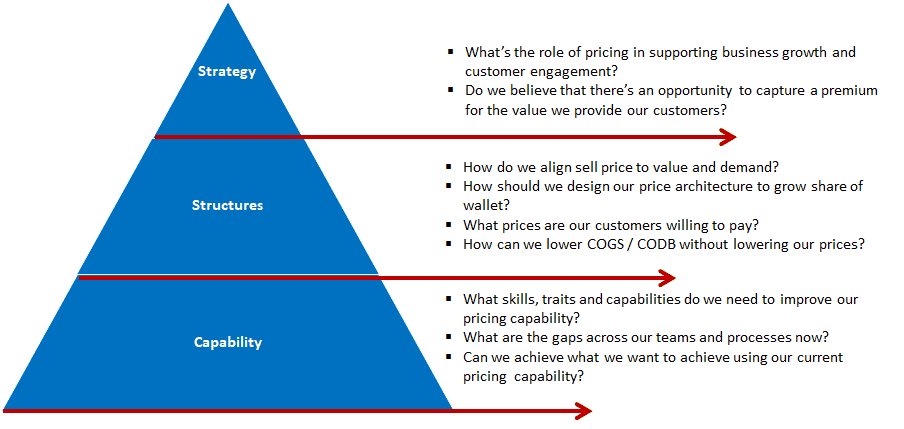
What is pricing in marketing management and business environments?
Pricing is a business’s most highly leveraged profit driver. Companies see an 8% increase in operating profit for every 1% of improvement in realised prices. This is twice the benefit as a 1% improvement in market share, variable costs or fixed-cost utilisation.
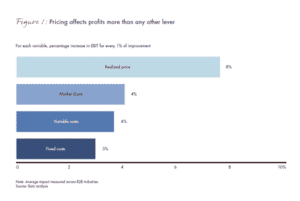
This is why pricing and revenue management teams are essential to the success of businesses. These teams aim at making pricing processes more efficient and innovative. It’s no longer acceptable to make gut-feeling pricing decisions that lead to margin loss and strained customer relations. Doing so breaks down an entrenched commodity mindset and slows down progress.
Cost-Plus Pricing
For some time, the dominant approach to pricing was cost-plus pricing. This focused on setting the selling price for different assets based on how much it costs to make or deliver an item plus a flat percentage margin. Margins usually aim for around 25%- 50% depending on the industry. This method typically works for hard durable goods and supply-constrained commodities. For example, fuel, gas, chemicals and grains.
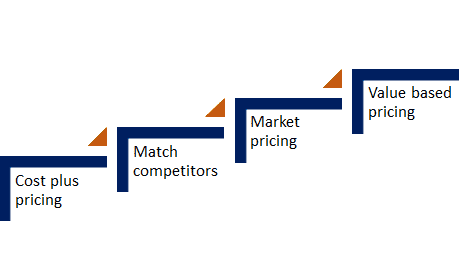
Typically, businesses that use cost-plus pricing also have a fairly fixed pricing process. Fixed pricing refers to predefined pricing strategies or structures. These are fairly static regardless of customer value drivers, demand, or market changes. The danger of cost-plus pricing is that businesses tend to overcharge or undercharge customers depending on the market situation.
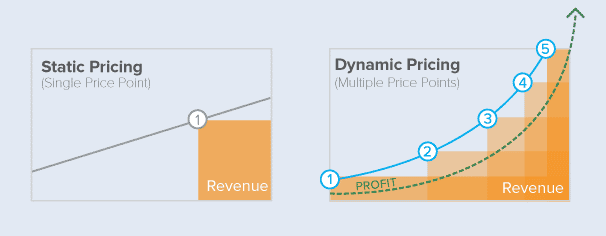
Often as costs reduce, so do the sell and cash margins. Year on year, profits fall significantly on the same volume.
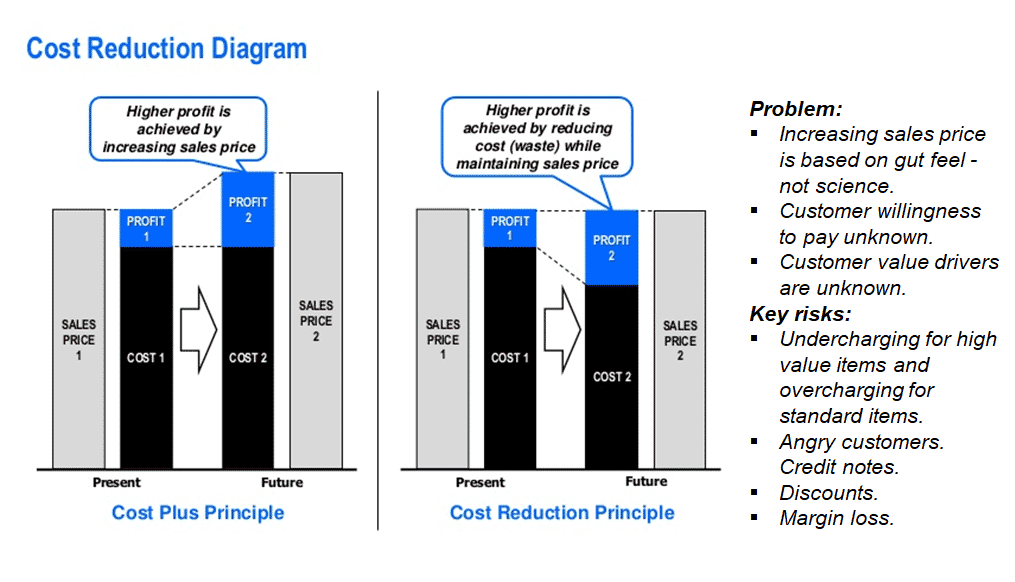
Individual sales managers tend to favour cost-plus pricing because it is straightforward. This method also gives sales teams broad authority to negotiate individual deals by heavy, non-standard discounting. This is what’s referred to as a listless discount.
However, procurement teams can easily identify inconsistencies. They can sort through inconsistencies in SKUs or Stock Keeping Units to find inconsistencies and suggest better ways to price items.
Value-Based Pricing
Value-based pricing is a more sophisticated way to set prices. This is because understanding customer value drivers and price sensitivities across segments can help drive productivity.
Value-based pricing can also be implemented in cost-plus businesses. Read more about that here.
Key value-based questions pricing teams ask are: What is pricing in marketing management and what does it look like in our situation? Why do our customers buy from us, and what role does price play in articulating the value we offer to our customers? What’s our share of wallets across different brands and products?
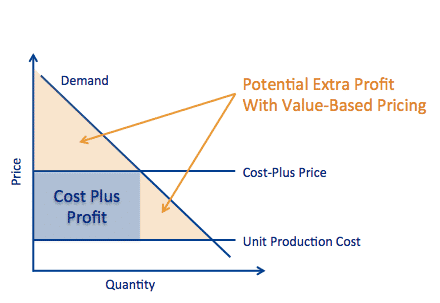
〉〉〉 Get Your FREE Pricing Audit 〉〉〉
Conclusion
Understanding what pricing is, what strategies there are, and what value drivers allow you to do can enable businesses to grow and succeed and help you answer what is pricing in marketing management. The way you price can drive profitability, but pricing in a vacuum doesn’t work. Pricing also needs to be aligned with your business and revenue models. With the right expertise, you can increase your business capabilities and meet your financial goals.

The World’s Best Telcos: How to Define Pricing in your Marketing Strategy
T-mobile pricing strategy has totally shaken up the telcos market globally with a new value-based pricing strategy. Unlike any telco operators before, T-Mobile’s sole focus is on giving subscribers what they want in their price plans.
T-Mobile sets its call rates and packages to cater to the needs of almost every consumer – and at really affordable prices. This is in contrast to Telstra’s marketing and pricing strategy which made special pricing for the combo packages that include broadband, TV, Movies and home phone.
What is pricing in marketing management in the Telco industry? A look into “Un-carrier” plans
Mobile users want more of everything – especially unlimited data.
However, telco operators are worried about giving away too much data. Unli-data is not something that telco operators are willing to give for free right now. Because of this, they are experiencing considerable margin pressure.
Telcos don’t want to give away too much before knowing how it’s going to impact them in the long term. This is why they have to cap the data at 1 Gbps so all the users can use the limited bandwidth during the day.
The data system works like this; bandwidth is what keeps data moving. From finding information in search engines to video streaming on youtube. Essentially you are downloading data to the device’s buffer files. Once finished, those buffer files are deleted. The more usage, the more bandwidth is required.
That’s why the business strategy for telecommunications companies is to constantly upgrade their network to meet the demands of the users and offer the best deals. This keeps them from abandoning their mobile plans in favour of other telecommunications companies.
T-mobile Marketing and Pricing Strategy
T-mobile went beyond traditional pricing methods and their pricing strategy paid off. They addressed the gripes of the users and unveiled their Un-carrier rebranding. The Un-carrier provides a single unlimited data plan like unbundling gadgets from the service plans, data cap removal from music and video streaming that would include taxes and fees in its price strategy.
The result was an additional 1.1 million more customers. This was the largest recorded user growth in a telco network, making T-mobile one of 2014’s Most Innovative Companies.
T-mobile is aware it is nowhere near the number of customers Verizon and AT&T has. However, they turned that into an advantage by offering bundles that neither competitors have.
A Phone Line vs. Data
T-mobile offered unique promotions, such as adding a line for free for family and offering couples of 55 years and older higher customer lifetime value and lower average customer acquisition cost. They aim to maintain a stable average revenue per user while pursuing aggressive pricing to attract new users.
Demographically speaking, 55 years and older have more credit than the younger demographic group. They also don’t use much as data and would rather stay with one provider. It makes sense T-mobile targets older people as they are more profitable and increase telecommunications revenues.
While its rival companies are finding to keep their margins profitable by offering higher-priced plans, T-mobile is slashing its prices and is adding more value to its plans to entice more customers.
Contractual Mobile Plans
The way the telco companies keep their profit margin is by subsidising smartphones with data plans. Admittedly, no one wants to pay the full price of a smartphone. They offer the device either at a very reduced price or for free provided that the subscribers keep using their plans for a duration of time under contract.
So the user pays the companies a subscription rate to use their service. The telco companies slap you with a hefty early termination fee (ETF) if you wish to terminate your contract early. This is to cover the cost of the subsidy on your device.
Contract-less Mobile Plans
Gadgets are constantly being upgraded, which leaves you stuck with outdated versions. This makes you powerless to change the terms of the contract. But with T-mobile’s flexible plans, you pay a portion of the price of the gadget upfront plus the monthly rates. At any time you want to end the contract, you can pay the price of the device minus the monthly payments already paid.
As T-mobile’s revenue improves, so does traction for contractless plans. It allows for flexibility to leave before the normal two years, which offers customers an option unlike anywhere else. Subscribers found the plans easy to understand. Additionally, there are no activation fees.
However, in terms of performance, the coverage is not the best if you live in a suburban or rural area. All in all, T-mobile plans are in harmony with the needs of the subscribers.
Let’s Define Pricing in Marketing Management – Overpricing vs. Underpricing
Pricing is what keeps telco companies attractive to consumers. It dictates the value of the product and the benefits the customers can get from it.
If overpriced, the products will not perform well in the market. If underpriced, the product becomes unprofitable to the company. This forces the telco company to discontinue the product line which results in souring the customer relationship with the company.
- T-mobile’s marketing and pricing strategy are based on what the subscribers wanted in their plans, by removing the data cap and purchasing the line instead of the data plan.
- Their unlimited plans called the Un-carrier plans are gaining market shares in the telecommunications industry. They are a telco company that is in tune with its subscribers and offers them affordable plans.
- T-mobile introduced contract-less mobile plans which provide flexible payments. Unlike other plans, you can opt to buy the phone with the previous payments to offset the balance.
- Other telco companies are catching up to T-mobile marketing strategy. Now the bigger telcos are noticing T-mobile unlimited plans. Hence, their future pricing and marketing strategy will include unlimited data instead of capping the data flow.
〉〉〉 Get Your FREE Pricing Audit 〉〉〉
Conclusion
T-mobile is changing the way telco companies are servicing their subscribers. Many telcos companies have neglected their subscribers and have not given them what they want: more data. The telcos need to address the concerns of their subscribers if they want to keep them using their plans. T-mobile’s marketing and pricing strategy has increased its market share, while other rival companies struggle to keep up by trying to competitively lower their price to match T-mobile prices. This shows the power of insight and innovative thinking on a company-wide level.

Define your Pricing in Marketing by Closing Skill Gaps in your Team
We used to hear a lot about ‘the war for talent’ – and that scarcity of talent was the biggest HR challenge facing all businesses. But scarcity is not the real problem, as there’s lots of talent out there. The real problem is knowing what good pricing talent looks like and then securing that talent before your competitors do.
Today, it is much harder to find the right pricing talent. By this, we mean talent that can help your business develop the best pricing methods and strategies. Many businesses still rely on job titles and CVs to source talent for pricing roles. However, the increase in bad hires and talent churn in pricing functions tells you that you cannot just find niche skills by looking at people’s position titles or CVs. You need to look much closer at your applicants.
For one, you need to identify the right skills for the pricing strategy – which can be difficult if you’re not sure what you’re looking for. And two, you need to find the best fit for the role – which is not as easy as it sounds, either because the best people for pricing roles may have never held a specific pricing role or position before.
What Should you Consider? Define your Pricing Strategy in Marketing through Capable Teams
The marketplace for pricing talent is more competitive than its ever been. Candidates are much more informed about their choices and more discerning in their selections. On top of this, in sectors such as technology, finance and pricing, the in-demand skillsets are ever-changing.
This means you need to identify talent before the choice of hiring pricing talent is taken from you. Their profiles should be a combination of unique skills and experience, rather than a general list of qualities individuals on your team already possesses. Let go of the idea of the purple unicorn. This was an outdated idea that talent was rare. It isn’t. You just have to employ the right strategies to spot the people you need, which can be harder than it looks.
To find the best candidate for your team, it’s important to set the stage. Create a sophisticated digital strategy that highlights your direction or story and explains your branding. Give your applicants compelling reasons to work for your company. This will give you a better chance to find the candidates you’re looking for.
It may seem counterintuitive, but you need to tailor your campaign for your potential employees just as much as your target audience. It’s also helpful to create micro-sites apart from the main career landing page. This will help you spot uniquely specialized individuals you may have otherwise missed.
〉〉〉 Get Your FREE Pricing Audit 〉〉〉
Build Competitive Insight to define pricing in marketing
The key to a successful hire is to be realistic about what gaps in your team’s skillset you need to fill. Your potential hires are also going to be looking from company to company to see who offers them the best deal. This is where you could miss out. Look at your direct competitors and see what they are proposing.
This isn’t to say you’ll be able to outbid everyone. What you can do is gain insight into what the candidate’s values, aspirations, and ambitions are. Use this knowledge to make candidates feel valued in the workplace, and be consistent. This can also help you in the future. The goals of candidates should be understood to make sure their work is aligned before they start to feel unmotivated and undetermined. This will nip it in the bud before they even consider jumping ship to another company. Gain insight by reaching out from the get-go.
Companies need to update their hiring strategies if they want to keep up and maintain a roster of well-rounded and specialized workers. Keeping with outdated hiring practices can have you realise that you hired the wrong people for the roles when it’s too late. Make sure to keep your information and digital platforms updated regularly and targeted properly. Find out what the candidates are looking for out of a job or company and address those needs. Doing so will allow you to hire the best people for your team.
For a comprehensive view and marketing research on integrating a high-performing capability team in your company,
Download a complimentary whitepaper on How To Maximise Margins.
Are you a business in need of help to align your pricing strategy, people and operations to deliver an immediate impact on profit?
If so, please call (+61) 2 9000 1115.
You can also email us at team@taylorwells.com.au if you have any further questions.
Make your pricing world-class!
Related Posts
3 Comments
Leave a Reply Cancel reply
Categories
- marketing strategy (26)
- Organisational Design (14)
- Podcast (114)
- Pricing Capability (87)
- Pricing Career Advice (10)
- Pricing Recruitment (19)
- Pricing Strategy (289)
- Pricing Team Skills (13)
- Pricing Teams & Culture (24)
- Pricing Transformation (47)
- Revenue Model (25)
- Sales Effectiveness (27)
- Talent Management (7)
- Technical Pricing Skills (35)







Pricing is one of the most important aspects of marketing. It’s the process of setting a price for a good or service and then charging that price to customers. Pricing can be tricky, but it’s an important part of creating a
Pricing is one of the most important aspects of marketing. It’s the mechanism by which you determine how much people are willing to pay for your product or service. You need to set prices that are fair and reasonable, but also high
Pricing is one of the most important aspects of marketing. It’s the mechanism by which you determine how much people are willing to pay for your product or service. You need to set prices that are fair and reasonable, but also high